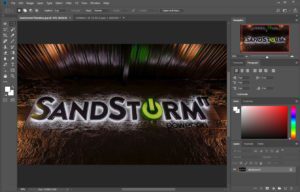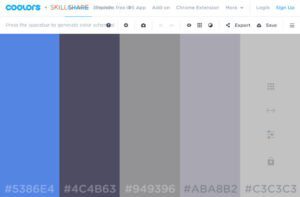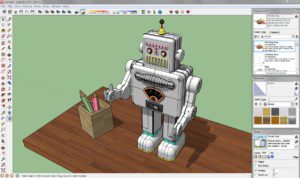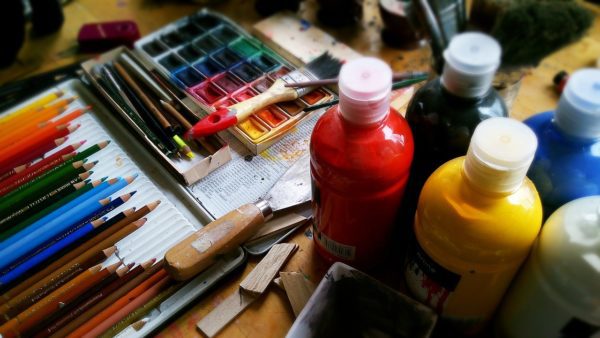When getting started in digital art, there are several different programs out there that are attractive to new users. A few are completely free, but most of the software is premium (paid). Having the correct software can greatly increase the quality of the output and efficiency of the artist. For example, you “can” technically use Microsoft Paint to design a logo if you really wanted to, although a program like Adobe Photoshop or Illustrator will make the job much easier and you will have more control over the final output file.
In this post, we’ll go over a few of the most important tools that should be in the arsenal of any graphic designer.
Adobe Photoshop
 First up is the most popular graphics and photo editing software for the past several years, Adobe Photoshop. Originally created in 1988, it has become the industry standard in raster graphics editing. Raster graphics are files that utilize various pixel data to display information. Examples of raster files are JPG, GIF, PNG and TIFF files. This is the most used tool by many graphic designers, just because of its versatility. There are literally hundreds of things to tinker with. There are dedicated tools, layer styles, text, adjustments, masks, colors, effects, and just about everything else to achieve whatever effects you desire from an image.
First up is the most popular graphics and photo editing software for the past several years, Adobe Photoshop. Originally created in 1988, it has become the industry standard in raster graphics editing. Raster graphics are files that utilize various pixel data to display information. Examples of raster files are JPG, GIF, PNG and TIFF files. This is the most used tool by many graphic designers, just because of its versatility. There are literally hundreds of things to tinker with. There are dedicated tools, layer styles, text, adjustments, masks, colors, effects, and just about everything else to achieve whatever effects you desire from an image.
You can modify photos and images, add text, design full-color documents for printing, create digital paintings, edit video and just about anything else you can dream of. With Adobe Photoshop, you’re only limited by your creativity and imagination.
Coolors.co

Coolors is an interesting tool that just popped up a few months ago. It’s often the first stop when creating a new project. Coolors.co is completely free and only requires login to save color schemes. You can pick as many colors as you’d like to start with, or none at all if you’re creating a scheme from scratch.
It’s also the easiest software in the list to use. You simply lock the colors you want to keep in the color scheme and switch out the other colors until you find the perfect combination. You can also adjust hue, saturation, and brightness of the entire palette. It can even pick the colors based on an image you upload, perfect for matching a new color scheme to compliment an existing logo.
Adobe Illustrator
 Adobe Illustrator was released originally in 1987 as a tool for Adobe’s font development software and editor for PostScript files. These days, it’s used primarily as a tool for vector format file editing. Upon initial inspection, the interface bears a striking resemblance to Photoshop, but the two programs are intended for two completely different markets.
Adobe Illustrator was released originally in 1987 as a tool for Adobe’s font development software and editor for PostScript files. These days, it’s used primarily as a tool for vector format file editing. Upon initial inspection, the interface bears a striking resemblance to Photoshop, but the two programs are intended for two completely different markets.
Illustrator is intended to be used primarily for PDF and other vector files that can be scaled to preserve quality. Vector files are simply files that display information using mathematical formulas instead of pixels. It does an excellent job with anything that contains vector shapes and fonts, such as flyers, logo design, large format printing, brochures or anything else that requires vector artwork.
Sketchup
 SketchUp was originally designed as a general purpose 3D creation tool by startup company @Last Software, which was acquired by Google in 2006. It was later sold to Trimble Inc in 2012. SketchUp is a free editing software that makes 3D Modeling easy for everyone, from novices to pros.
SketchUp was originally designed as a general purpose 3D creation tool by startup company @Last Software, which was acquired by Google in 2006. It was later sold to Trimble Inc in 2012. SketchUp is a free editing software that makes 3D Modeling easy for everyone, from novices to pros.
SketchUp is used extensively in industries such as interior design, manufacturing, architecture, woodworking, engineering, construction and more. As 3D printing is becoming more popular, more and more people are trying SketchUp to make the most of their new equipment.
It’s worth mentioning that 3D Warehouse models import directly in SketchUp. This gives you thousands of models at your disposal to make your 3D work even better with less effort. For example, if you need a refrigerator to mock up in a house, there are over 4,000 options! Even still, perhaps the best selling point to SketchUp is that it’s 100% free for the basic version.
Hopefully, this list will help get the creative juices flowing and will allow better results in less time with the next digital art project you tackle. If you have any questions regarding graphics or any type of tech, please contact your local tech experts at SandStorm IT at 901-475-0275.

